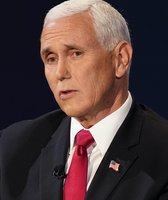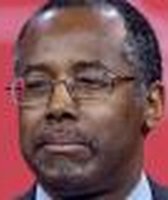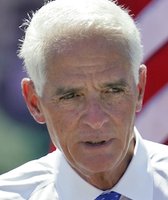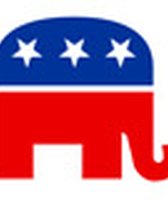Get PolitiFact in your inbox.
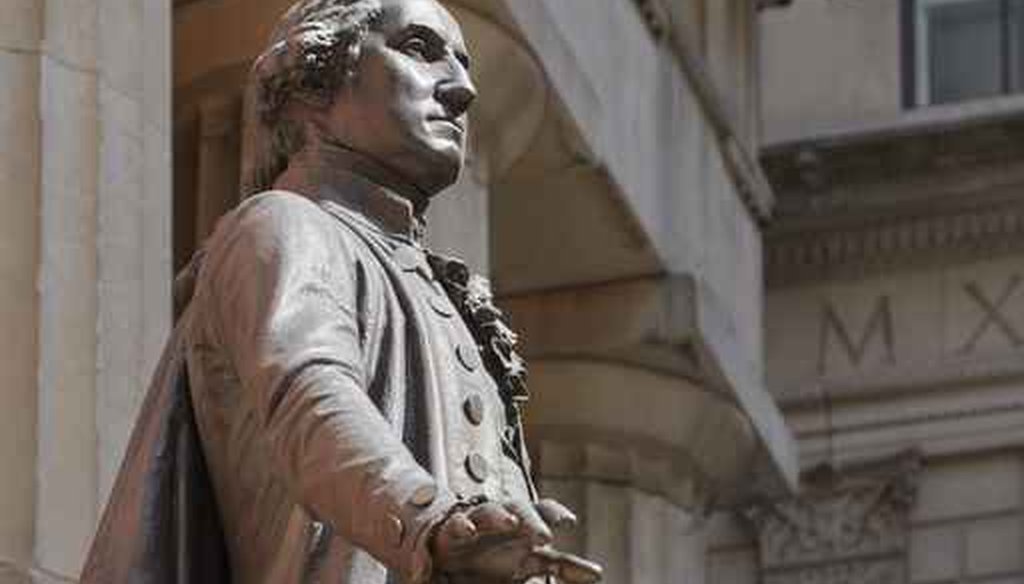
(AP file photo)
Politics in 2018 can seem so relentlessly negative, it’s tempting to seek escape in reading stories of the Founding Fathers.
Take George Washington.
Far from the staid-looking fellow on the $1 bill, Washington was a tall and athletic man, a skilled soldier, an avid horseman and a graceful dancer. Known for his eloquent silence, he instinctively deflected attention from himself so as to emphasize the birth of a new country and government by the people.
Still, there were ways in which George Washington’s life is like today. Here’s one: He had to fight fake news.
Forged letters from before his presidency claimed to show in his own words that he privately sympathized with the British monarchy and thought the American cause was doomed. The letters also suggested that Washington thought Americans weren’t ready for democracy.
Even then, Washington was a charismatic figure and the symbolic leader of the revolution. The idea that he didn’t ardently support the new nation was scandalous.
The letters were clever forgeries, but they dogged Washington. They circulated in pamphlets, during both the American Revolution and Washington’s presidency -- until Washington grew tired of hearing about them and issued an adamant fact-check of his own.
Whoever forged the letters worked to make them believable, including details about Washington’s life as a Virginia farmer. When the letters first appeared in London in 1777, they were published with a preface claiming they had been found when Washington’s enslaved servant, William "Billy" Lee, was captured. Lee worked as something of a "body man" to Washington, even accompanying him on horseback when Washington was out in the field with his troops. The forgers claimed that Lee had letters in a briefcase when the British captured him.
The letters were immediately recognizable as fakes to Washington’s inner circle. One of Washington’s friends, Richard Henry Lee, saw the letters and assumed they had been written for purposes of both slander and personal profit, much like today. He wrote to Washington:
"The arts of the enemies of America are endless, but all wicked as they are various. Among other tricks they have forged a pamphlet of letters entitled ‘Letters from Gen. Washington to several of his friends in 1776.’ The design of the forger is evident, and no doubt it gained him a good beef steak from his masters. I would send you this pamphlet if it were not too bulky for the post, as it might serve to amuse your leisure hours during the inaction of winter."
Like any target of a fake news attack, Washington must have wondered if responding would just bring more attention to the phony reports. Washington seems to have ignored the letters for the most part during the revolution, until they made another appearance toward the end of Washington’s presidency.
In 1795, Washington was urging the Senate to ratify the Jay Treaty, an agreement created by Alexander Hamilton that normalized trade with Britain now that the war was over. Some didn’t like the treaty because it was too friendly to an old foe. Others disliked the presidency itself and thought it was too much like a monarchy. Washington, in their view, was acting like a king. The fake letters confirmed what these critics already thought, that Washington didn’t care about democracy and was abusing his power.
This time, Washington took action. On the last day of the presidency, Washington wrote a fact-check of the fake letters and sent a final note to the Secretary of State for posterity. The very origin of the letters was wrong, Washington wrote. Billy Lee had never been captured:
"They are said by the editor to have been found in a small portmanteau that I had left in the care of my mulatto servant named Billy, who, it is pretended, was taken prisoner at Fort Lee, in 1776. … At the time when these letters first appeared, it was notorious to the army immediately under my command, and particularly to the gentlemen attached to my person, that my Mulatto Man Billy had never been one moment in the power of the enemy. It is also a fact that no part of my baggage, or any of my attendants were captured during the whole course of the war."
Washington noted that he didn’t feel a need to publicly rebut the letters during the war, but now that he was leaving the presidency, he felt called to act, if only to assert a simple truth: "I have thought it a duty that I owed to myself, to my country and to truth, now to detail the circumstances above recited; and to add my solemn declaration, that the letters herein described, are a base forgery, and that I never saw or heard of them until they appeared in print."
Washington’s denial was carried in newspapers around the country and even pasted into the inside cover of the original pamphlets that included the fake letters, according to 19th century historian Worthington Chauncey Ford. (Ford published a definitive account, The Spurious Letters attributed to George Washington, back in 1889.)
William Ferraro, a senior associate editor with the University of Virginia’s Washington Papers project said the fake letters were not particularly unusual for their time. Many politicians and writers schemed against each other, and pamphlets were a common format to use when making attacks on opponents. Rumors and innuendo ran rampant.
What’s more, the unity and idealism of the revolution, the spirit of 1776, had gradually dissipated over the years. By the time Washington was preparing to leave office in 1797, political parties and extreme partisanship had begun.
"It got Washington incredibly upset. It was one of the major reasons he wanted to leave politics. He was fed up and wanted to go back to Mount Vernon and take care of his farm," Ferraro said.
Today, fake news takes the form of online posts, chain emails and snarky comments on Twitter. But the sentiments that drive fake news go back a long way.
"Now with social media and electronics it can explode so quickly," Ferraro said. "But skullduggery itself has a huge history in American annals."
Our Sources
National Archives, Founders Online, From George Washington to Timothy Pickering, 3 March 1797
The Library of Congress, George Washington Papers, Series 4, General Correspondence: George Washington to Timothy Pickering, March 3, 1797
National Archives, To George Washington from Richard Henry Lee, 2 January 1778
Worthington Chauncey Ford, The Spurious Letters attributed to George Washington, 1889
Ron Chernow, Washington: A life, 2010
Joseph J. Ellis, His Excellency George Washington, 2004
Joseph J. Ellis, Founding Brothers: The revolutionary generation, 2000
Interview with William Ferraro, The University of Virginia’s Washington Papers, June 27, 2018












